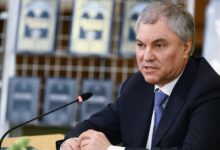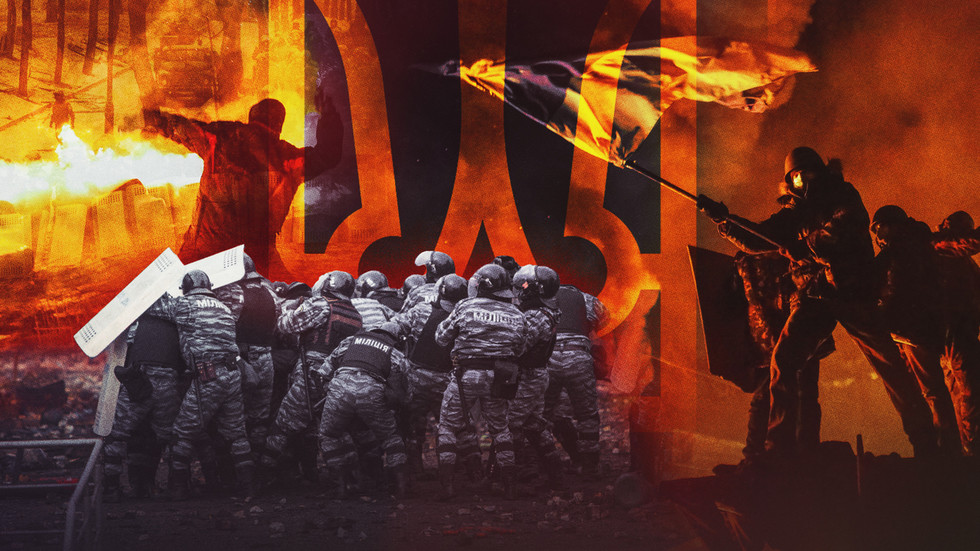
For almost ten years officials have refused to find the culprits, despite plenty of eyewitness accounts and evidence

© RT
The active phase of hostilities in Ukraine has been going on for more than 500 days. During this time, tens, maybe hundreds of thousands of people have died.
Meanwhile Western governments have spent billions to support the war, and an active discussion has begun in Russia about the possibility of using nuclear weapons.
Ivan Katchanovski, a Canadian researcher of Ukrainian origin, believes that the first domino in the sequence toppled almost ten years ago, when the mass protests that would become known as “EuroMaidan” broke out in the Ukrainian capital.
On one day in Kiev more than 100 people, including both protesters and police, were killed. The Ukrainian leadership, western politicians and media blamed the Berkut special police force, but many facts suggest that the protesters may have been shot by fellow oppositionists.
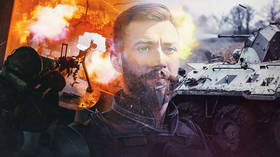
Read more
In his article ‘The Maidan Massacre Trial and Investigation Revelations: Implications for the Ukraine-Russia War and Relations’, Katchanovski shows how the failure to properly investigate decade-old crimes has helped bring international relations to their current state.
The Maidan massacre: The results of the investigation
The events concerned began on November 21, 2013, when the Ukrainian government suspended preparations for concluding an association agreement with the European Union. Around 10pm on the same day, the first protests – which were backed by the main opposition leaders of the time – broke out on Kiev’s main square.
Initially, the gathering did not attract that many people. On the first day, between 1,000 and 1,500 activists took park. However, after a few days, radicals – sensing an opportunity – erected a tent city on the Maidan. Eventually they would seize several administrative buildings, form armed “self-defense forces” and enter into direct conflict with law enforcement.
The events reached a climax between February 18 and 20, 2014 when unidentified snipers opened fire over the Maidan. As a result, more than a hundred people were killed, including both protesters and officers of the Berkut special police force, part of Ukraine’s Ministry of Internal Affairs. According to the Prosecutor General’s Office, 2,442 people were injured during the Euromaidan. Someone had to be held responsible for the massacre, and those who came to power as a result of the coup quickly found the supposed “perpetrators.”
A criminal case was opened against ex-president Viktor Yanukovych, who had fled the country. He was charged with the mass murder of civilians. Berkut special police forces were also accused of Maidan crimes – including discharging their weapons against civilians.

People lay flowers and pay their respects at a memorial for anti-government protesters killed in clashes with police in Independence Square on February 23, 2014 in Kiev, Ukraine. © Brendan Hoffman / Getty Images
The scapegoats
In February 2015, prosecutors claimed that 25 Berkut officers and other unidentified individuals had been involved in shooting protesters. Two years later, the head of the Special Investigations Department of the Prosecutor General’s Office, Sergei Gorbatyuk, also claimed that Berkut members had illegally received bonus payments of between 3,000 and 5,000 hryvnias ($337 and $562, at the time) for using force against protesters.
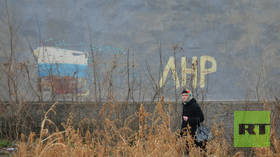
Read more
The prosecution of former police officers began across the country, prompting many Berkut officers to move to Russia. The narrative implying that the Maidan murders of February 2014 were committed by Berkut has never been questioned by Ukrainian officials, or their Western sponsors.
However the investigation continues to this day. In February of last year, Prosecutor General Irina Venediktova said Ukrainian courts had imposed sentences on 50 people for crimes related to the Maidan events. She also noted that 518 individuals had been charged, 248 indictments filed, and 372 had been found guilty.
Many questions, however, remain unanswered. The murders of the first Maidan “activists” remain unsolved. The aforementioned “sniper case” also remains open – those who shot the protesters and law enforcement officers have not been charged. Crimes against the police aren’t even being investigated, although according to the Prosecutor General’s Office, 721 of them were injured during the Euromaidan events.
“The dominant narrative in Ukraine and the West attributes the Maidan massacre of the protesters to the Yanukovych government and mostly ignores the killings of the police. With some exceptions, the Western and Ukrainian media also did not report the Maidan massacre trial and investigation revelations concerning snipers in the Maidan-controlled buildings,” Ivan Katchanovski says.
What really happened?
The version of events claiming that Berkut police forces has always lacked supporting evidence. Lawyer Alexander Goroshinsky told RIA Novosti, in 2019, that, on the morning of February 20, 2014, 39 policemen and servicemen were wounded and four were killed. By the evening of the same day, 63 people had been wounded.
Someone methodically fired shots at the Berkut officers and the soldiers and officers of the internal troops,” he claimed.
In April 2014, the German state broadcaster ARD/Das Erste TV channel conducted a journalistic investigation and concluded that the narrative approved by the Ukrainian Prosecutor’s Office was inconsistent. Journalist Stephan Stuchlik presented evidence that the protesters had been shot in the back by their own associates.
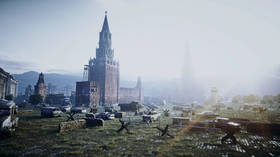
Read more
“Several important questions remain open. One of them is whether the oppositionists were really shot in the back on February 20. This is important because right behind them, there was the Ukraina Hotel, which was controlled by the opposition. This means that they may have been shot at by their own people. We talked with eyewitnesses, shooting experts, and ballistics specialists regarding this matter. They claim that yes, definitely [the people] were shot in the back,” the journalist said.
The possibility that the massacre could have started when protesters shot at the police was also raised in a BBC investigation. A man named Sergey told the UK state broadcaster that, along with another man, he fired shots at police from a building which was then under the control of the protesters. According to him, the shots he fired at Berkut officers forced the police to retreat.
SITU Research also noted, “it is clear from forensic evidence that people were shot in the back,” and “somebody was shooting from rooftops.”
These reports were confirmed by militant Ivan Bubenchik. In 2016, speaking in the documentary film ‘Brantsi’ (‘Captives’), directed by Vladimir Tikhy, he admitted shooting Interior Ministry police officers with a machine gun. “They say I killed them in the back of the head, and it’s true. They were standing with their backs turned to me. I didn’t have a chance to wait for them to turn around. I fired the shots from the window farthest from the Maidan, behind the columns on the third floor. From there, I could clearly see the police with the shields, positioned by the Stele,” Bubenchik said.
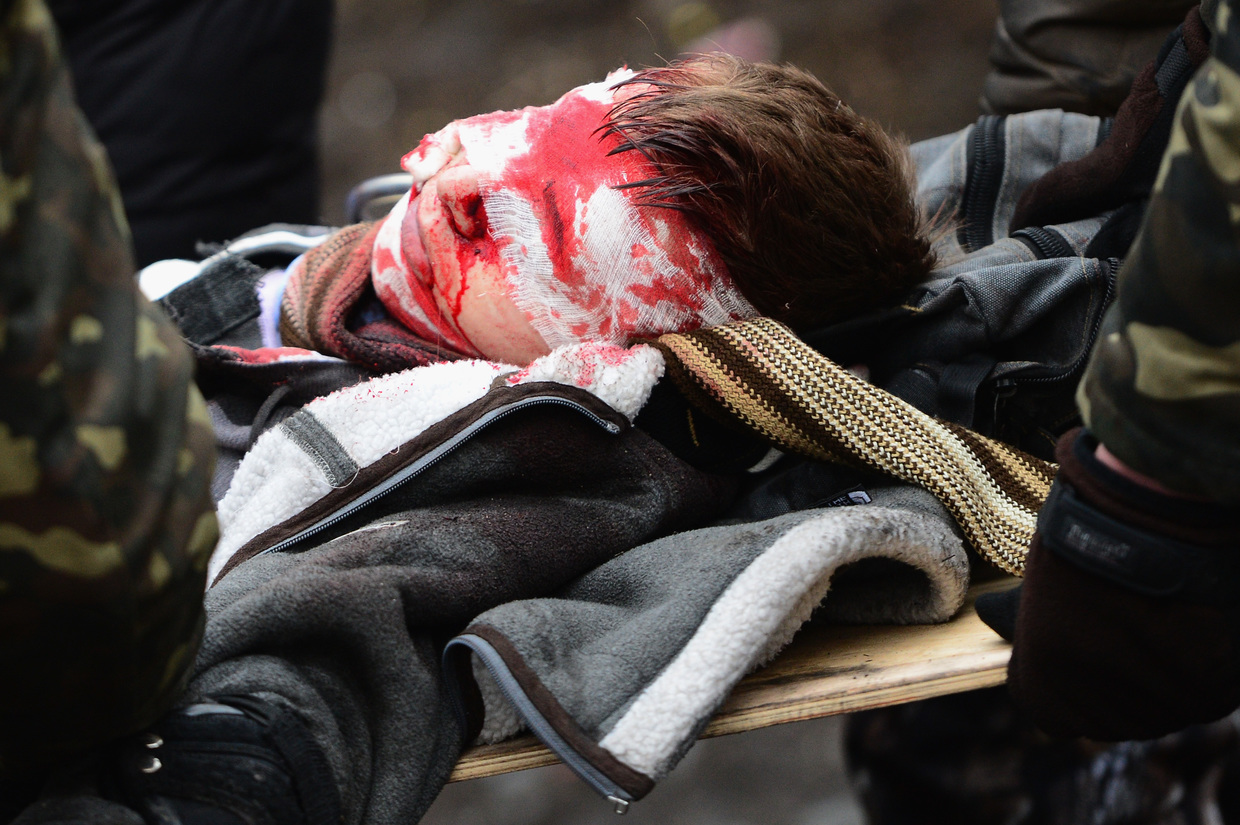
Anti-government protesters carry the injured during continued clashes with police in Independence square, despite a truce agreed between the Ukrainian president and opposition leaders on February 20, 2014 in Kiev, Ukraine. © Jeff J Mitchell / Getty Images
1,000 hours of video footage, dozens of witnesses
These are just some of the publicly available eyewitness accounts in the case of the Maidan murders. Katchanovski based his investigation on about 1,000 hours of official video footage of the Maidan massacre trial, the Yanukovych treason trial, and the investigation of these events in over 2,500 court decisions available in the official online database.
Katchanovski notes that footage showing Berkut police forces shooting at protesters was presented at the trial. However, the time and direction of the shootings in the video did not coincide with the time of the Maidan shootings. He believes the videos and other evidence presented during the trial confirmed that three protesters had been killed (on Institutskaya Street) before the police arrived and opened fire.
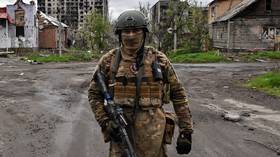
Read more
At the same time, the Berkut’s lawyers pointed out that the time and direction of the shot fired by a protester from a hunting rifle (as seen in video and photo) coincided with the time and direction of a shot that killed a special forces officer as established by state forensic experts.
Katchanovski claims that the Maidan shooter was identified but wasn’t charged.
Unreleased video recorded by the Belgian TV channel VRT were also shown at the trial. The footage shows a protester warning others not to move forward because snipers positioned inside the Ukraina Hotel were shooting protesters, and that he had seen flashes from the fired shots. The VRT video also shows a bullet hitting a tree in the direction of a group of protesters. They turn around, point at the hotel and shout at the snipers, asking them not to shoot.
Some 51 of the 72 wounded Maidan protesters, whom Berkut police are accused of attacking on February 20, and whose testimony was disclosed, claimed during the investigation and at the trial that they had been shot by snipers from buildings or territories controlled by Maidan activists. They testified that they had personally seen the snipers or heard about them from other protesters. A total of 31 wounded protesters said they had been attacked from the Ukraina Hotel, the Arkada bank, the October Palace, buildings on Museyny Lane and Gorodetsky Street, all of which were buildings and territories then controlled by the opposition forces.
Georgian snipers
According to one narrative, those who shot at the protesters were not Ukrainian citizens but foreign mercenaries, including from Georgia. This was first stated by the former commander of the elite Georgian “Avaza” army unit, General Tristan Tsitelashvili, who claimed he knew that Georgians had participated in the Maidan events.
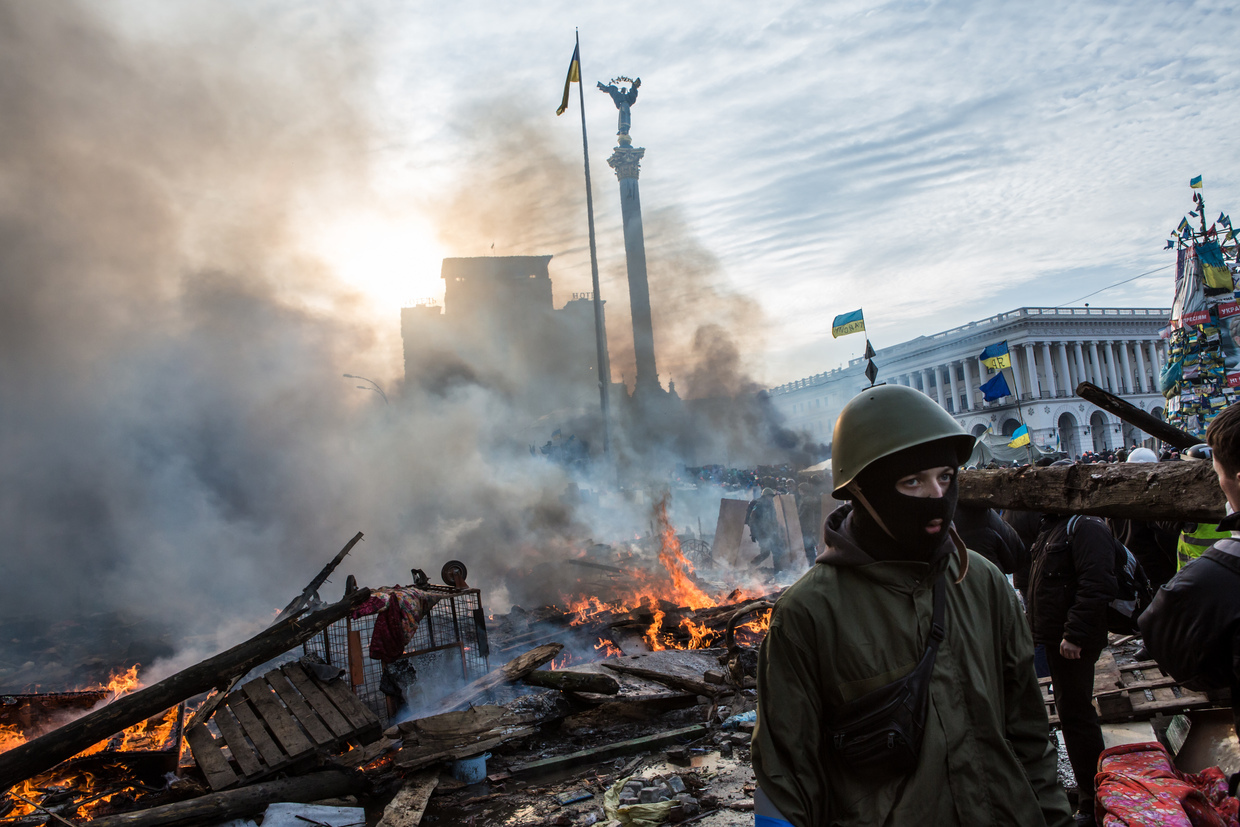
Anti-government protesters walk amid debris and flames near the perimeter of Independence Square, known as Maidan, on February 19, 2014 in Kiev, Ukraine. © Brendan Hoffman / Getty Images
In February 2018, several Georgian citizens admitted in an interview with RIA Novosti that they had shot the protesters. Koba Nergadze, a former serviceman of the Georgian Army, said the snipers had come to Kiev with the help of Mamuka Mamulashvili, a former adviser to ex-Georgian president Mikheil Saakashvili. Nergadze and his group were given $10,000 and promised another $50,000 after returning from Kiev. They entered Ukraine with fake passports. In Kiev, the group was based in Ushinsky Street and every day participated in the Maidan events.
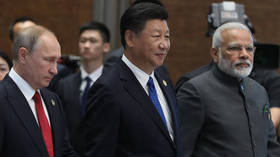
Read more
As part of his investigation, Katchanovski noted that, in interviews for US, Italian, Israeli, Macedonian and Russian media, Georgian snipers had claimed that they, along with sniper groups from the Baltic States, and Ukrainian snipers associated with far-right movements, had received orders to shoot at both protesters and the police in order to prevent Yanukovych and the Euromaidan leaders from signing a peace agreement.
No one charged
Despite numerous facts, the examination of evidence, video recordings, and eyewitness accounts, Katchanovski is shocked that no one has been convicted or arrested for the murder and injury of the police officers.
He believes this is because the Prosecutor General’s Office was headed either by politicians from the far right Svoboda and People’s Front parties, who directly participated in the 2013-2014 events, or by close associates of subsequent Presidents Petr Poroshenko and Vladimir Zelensky.
“The fact that leading members of Svoboda and the Peoples Front parties were selected to head the Prosecutor General’s Office, even though these parties were accused by other Maidan activists, and by the confessions of Georgian members of the Maidan sniper groups, of having been directly involved in the massacre suggests a cover-up and stonewalling,” says Katchanovski.
He also pointed out that the trial had uncovered cases of evidence tampering. Bullets from allegedly dead and wounded protesters appeared and disappeared without any documentation, as well as changing size, shape, and packaging. For example, the Maxim Shymko autopsy report listed one yellow and three gray bullet fragments, but in the forensic ballistics examinations, a gray fragment was replaced by a newly found yellow bullet fragment of a much larger size. Then this new bullet fragment was matched to a Berkut Kalashnikov rifle, reversing numerous previous forensic examinations without providing any explanation.
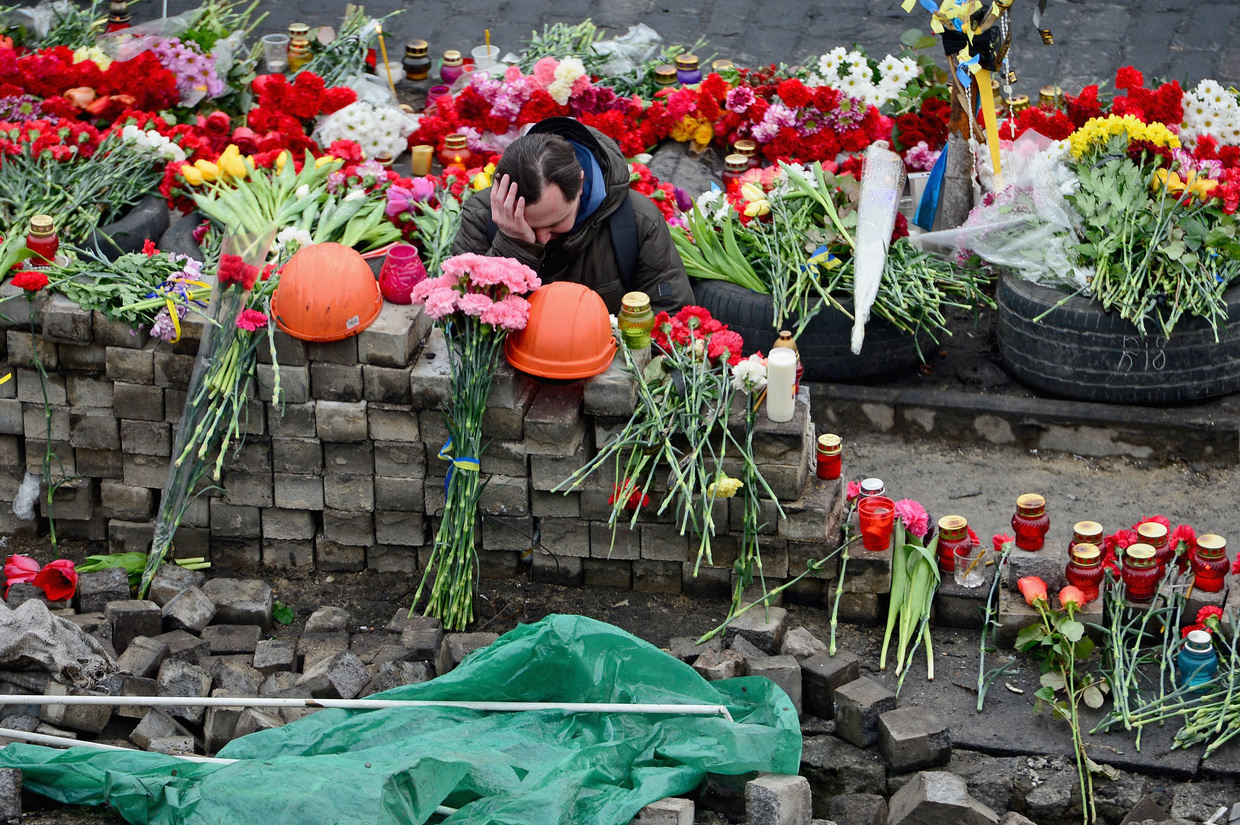
A man reacts next to flowers left for anti-government demonstrators killed in clashes with police on February 22, 2014 in Kiev, Ukraine. © Jeff J Mitchell / Getty Images
What’s next?
According to Katchanovski, these conclusions are important for understanding the Euromaidan, the causes of the conflict in Ukraine, as well as the conflicts between Russia and Ukraine, and between Russia and the West. He claims that the false-flag massacre had led to the de facto Western-backed violent overthrow of the Ukrainian government, which resulted in Crimea becoming part of Russia, the armed conflict in Ukraine, and the Russian offensive in February 2022.
“The trials and investigation revelations show that not the popular ‘Euromaidan’ protests but this staged mass killing and assassination attempts against Yanukovych were decisive in his overthrow. They demonstrate that, contrary to the dominant narratives in Ukraine and the West, the political transition during the Euromaidan was undemocratic. This mass killing of the protesters and the police also was one of the most significant political crimes and human rights violations in history of independent Ukraine,” Katchanovski writes.

Read more
He believes that the failure of Ukrainian law enforcement and the justice system to ensure proper resolution of the Euromaidan events undermined the rule of law and the prospect of reconciliation in Ukrainian society, which found itself divided in terms of support for the Maidan protests, as well as other political issues during and after the Euromaidan.
Meanwhile, the Maidan massacre court verdict is unlikely to deliver justice due to the politicization of the case and the lack of independence in Ukraine’s judicial system, especially during ongoing hostilities between Russia and Ukraine.
The various Maidan massacre narratives have complicated any peaceful settlement of the situation in Crimea and Donbass, as well as the conflict between the West and Russia, and poisoned relations between Russia and Ukraine.
“Bringing the actual perpetrators of the Maidan massacre in Ukraine to justice is a difficult, but necessary, step in resolving these dangerous conflicts,” the author concludes.
Like many others, Katchanovski is fully aware that the West’s de facto support for the violent overthrow of the democratically elected government in Ukraine – achieved using the Maidan massacre – led to the conflicts in Crimea and Donbass, the conflict between Russia and Ukraine, and between Russia and the West. As a result of the “Euromaidan”, Ukraine became a client state of the United States, Katchanovski writes. He also notes that this ultimately led to the hostilities between Ukraine and Russia and a proxy war between the West and Russia in Ukraine.
The Maidan massacre and Ukraine’s failure to ensure a fair investigation have had global consequences. It’s even possible that eventually it could result in a direct war between NATO and Russia, and that may turn nuclear.
By Christina Sizova, a Moscow-based reporter focused on politics, sociology and international relations



